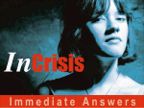By: Michael Conner, Psy.D Alternative intervention and education programs have grown as a free market solution in direct response to a failure in the public sector to provide adequate intervention and educational services. Wilderness therapy programs, wilderness boot camps and boot camps offer intervention services for parents of youth at risk who have special needs. Most of the children in need of intervention have mental, emotional and behavioral problems ranging from mild to severe. Transition boarding programs, therapeutic boarding schools and traditional boarding schools provide transition experiences, follow-up services, remedial education and college preparation opportunities. What began as a cottage industry consisting of quality alternatives has become a fast growth industry where parents are enrolling children who may have problems beyond the skill of these programs. Depression, Anxiety and Suicidal Behavior In 2002, the U.S. Surgeon General reported that one out on ten teenagers have mental health problems ranging from depression to schizophrenia. Only one out of three of these children receive appropriate mental health services. Nearly three out of ten children suffer from symptoms of anxiety and depression. Symptoms of anxiety and depression are contributing factors as well as the consequence of family, social and academic problems. Along with symptoms of depression and anxiety come other more serious problems including self-defeating, destructive, violent, self-harming and suicidal behavior. Suicide is the second leading cause of death among teenagers. The risk of suicide or self-harming behavior in an intervention, transition, treatment and educational program is no less than the risk in society. A completed suicide is very rare in comparison to the number of children who consider or attempt it. There is approximately one teen suicide every 31 minutes in the United States. Programs need to recognize that the assessment of risk and the intervention can be entirely negligent and a child will still not succeed or attempt suicide. This illusion of "success" can give professionals and programs a false sense of confidence in their response. Re-examination of staff recognition and responses to a suicide risk is indicated when a program is operating on the basis of popular beliefs, potential myths or evaluation and intervention procedures that have not been reviewed by a qualified, trained and experienced crisis intervention professional. Why Do Children Attempt Suicide? Nearly a thousand articles and books have been written about the cause of suicide as well as appropriate interventions and prevention. There are essentially six reasons why children attempt suicide. Understanding these reasons can help you recognize the risk of suicide.
What Are The Critical Suicide Risk Factors? Recognition of a suicide risk begins in a relationship where a child exhibits or reveals critical information to a friend, trusted staff member or mental health professional. Ignoring Critical Risk Factors or the unqualified dismissal of these risk factors would almost certainly be negligent. Suicidal "like" behavior is a complex emotional, cognitive and behavioral problem to understand. Not all suicidal behavior is motivated by a desire to die. Children may become para-suicidal (e.g. self-destructive) for reasons other than a desire to die. For instance, self-mutilation is often motivated by a compulsion to escape emotional pain. There are many professionals who believe that the death of children is often the result of para-suicidal behavior. A drug overdose where a child changed their mind can lead to liver failure several months later. Or a child can become so overwhelmed with a sudden loss of freedom and control that he or she will jump out a window. Whether suicidal or para-suicidal, critical risk factors must be considered critical because children can and do die during such behavior. Asking a child if they are feeling suicidal does not increase the risk that a child will become suicidal. At worst, they may act suicidal to punish others or regain the illusion of control in their life. But an insensitive or sarcastic response to a para-suicidal state can increase the risk of suicide. The following are critical risk factors that you should listen and look for. These are also questions that you can simply ask a child
Duty To Protect and To Insure Proper Care The death of a child by suicide behavior is the fault of a intervention, transitional, treatment or educational program if the program:
Successful litigation, case law and licensing board decisions across the country demonstrate an unmistakable trend in which professional associations and juries expect professionals and programs to act within professional guidelines and standard of practice. Juries and legislators get involved when programs and professionals do not establish or follow a reasonable standards of practice. Statutory laws have been passed in some states to codify performance expectations. The challenges facing programs are issues of negligence, due diligence and standard of care. Negligence can be defined as the four Ds: Dereliction of a Duty Directly lead to Damage. Diligence is nothing more than persistent effort with regard to expected action. Standards of care are established guidelines for conduct within a profession providing services or those guidelines that would be expected based on a similar profession. Ethical requirements for professional licensure as well as statutory and case law across the country demonstrates that professionals and programs have what is called a "duty to care" and a "duty to protect" especially in the case of abuse or dangerousness to self and others. In the case of abuse and violence, programs and professionals can be mandated to take actions that would responsibly protect an individual and the public. Merely reporting concerns to responsible agencies and individuals in not necessarily enough. Failure to have a child evaluated by a qualified professional is negligent. Negligence with regard to professional and program responsibilities is a growing area of concern for those facing the risk of suicide. Some programs feel the best way to minimize their liability is to avoid hiring licensed professionals who would demand a higher standard of care in order to protect their license. (I am aware of an event where field guides in a wilderness program denied a qualified crisis intervention professional access to a suicidal child who was their client. The field guides insisted that they could handle it by their self and that they did not need the childs counselor.) While only a few programs may avoid and minimize their duty to care and protect, I believe consumers will applaud with confidence any program that responds to these issues by offering competent practices and a culture of professional awareness. Dealing With The Risk of Suicide Popular ideas and myths about suicide and suicidal behavior are rampant in society. Suicidal statements and behaviors are often minimized or dismissed as "attention seeking", "manipulative", a "cry-for-help" or a "refusal to face feelings." While these characterizations may be correct in some instances, they are often used in a derogatory manner that is based on superficial impressions. Superficial opinions are not only unresponsive to children on the verge of self-destruction, but they foster a professional culture that borders on systematic negligence. Therapeutic activities within a program must be appropriate to the needs and vulnerability of children. Some program activities carry inherent risks. Those involving unpleasant, aversive and punishing consequences such as depravation of social interaction or corporal punishment are high risk interventions that can result in violent, destructive, self harming and suicidal behavior. These approaches should only be authorized by a qualified professional who has an appropriate treatment plan that is based on a qualified evaluation made in consultation with the childs parents. The standard of care for a program facing a suicide risk should reflect the highest professional practices. Those practices should be developed by qualified professionals who are trained and experienced in addressing the risk of suicide. Policies, procedures and training should be developed through consultation with professionals who understand the programs resources relative to the children served. Policies, procedures and training can be professional and realistic. Referrals to Emergency Departments (EDs) by programs is a common risk management policy. But realistically, managed health care has created road blocks where hospital responses are minimal and staff literally refuse the admission of a child if that child can say they will not kill their self within the next 24 hours. Except in the case of active suicidal behavior, it is not enough to rely on community mental health or hospital emergency departments for evaluation and intervention. Counselors and therapists as well as medical and mental health professionals are not necessarily more qualified to evaluate and deal with a risk of suicide than a reasonable person. Physicians are trained to diagnose and treat medical conditions, medicate if necessary, and admit patients to holding or psychiatric facilities. Evaluation, intervention and treatment of a suicide risk are specialized skills that require training and supervised experience. Program personnel should consider themselves responsible for the outcome, when that program and their staff assume the authority to intervene or dismiss the risk of suicide. The evaluation of a suicide risk is in fact an intervention and that intervention should not end once the childs risk is no longer considered immediate. Consultation with parents and obtaining second opinions from qualified professionals are reasonable standards of practice. A minimally qualified professional to deal with a suicide risk would have,
Professionals with minimal qualifications should also obtaining consultation on a regular basis from a professional who has expert skill and experience. Programs have a duty to insure proper care. This duty is clear if the child displays any critical risk factors. Programs must be vigilant if the admission reveals a history of a previous hospitalization or residential treatment, the child is on medications for a psychiatric condition, or there is a history of dangerous or self-harming behavior as well as failing social and educational performance. Programs must proactively examine the potential interaction effects between each child and program structure before and after admission. Supervision or consultation with a qualified person as well as face to face evaluation are essential when staff are not qualified to deal with a risk of suicide [Dr. Conner, a clinical and family psychologist, has completed a research and training fellowship in Graduate Medical Education at Kaiser Permanente and has worked in emergency room psychiatry, inpatient crisis intervention, community crisis intervention, school crisis response, outpatient mental health and law enforcement. Dr. Conner has National Board Certifications in Emergency Crisis Response, Emergency School Response and Traumatic Stress.]
Consider this resource before you
|

